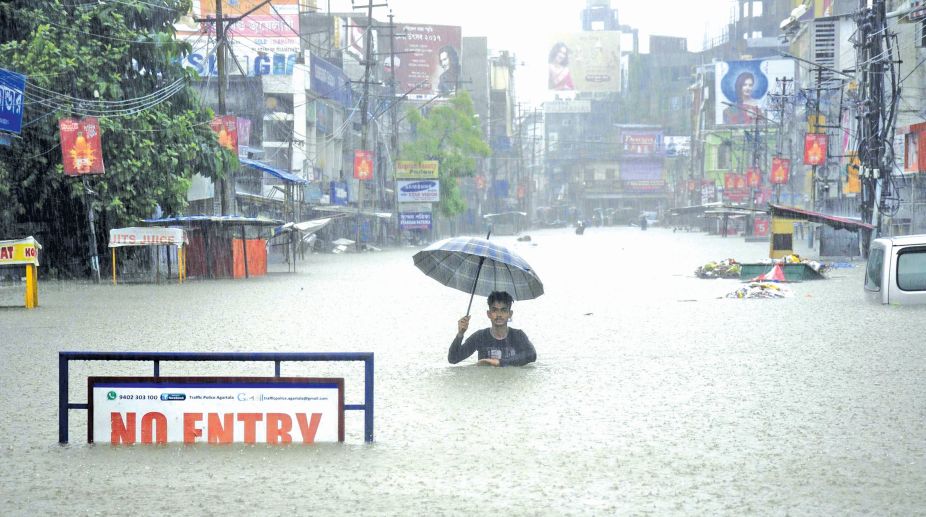The raging wildfires in Southern California and the wettest winter in a century in Northern California earlier in 2017 are the worst for the state in recent memory. But they are part of a new pattern across the Pacific that has seen a rise in extreme events in Australia, Pacific islands, Japan, Vietnam and elsewhere this year.
While multiple factors, from soil erosion to unregulated urbanisation, help turn hazards into disasters, runaway global warming is proving to be a tipping point for catastrophes. It’s time for politics, economics and the media to deepen actions on the new climate reality.
Advertisement
Droughts, fires, storms and floods are the most tangible impact of climate change today. Scientists are reluctant to attribute a particular event like the 2017 Southern California fires or the southwest floods in Japan, but they associate the rise in weather-related episodes over decades with higher temperatures from increased greenhouse gases in the air. Scientists warn that runaway climate change could decimate more than three fourth of the fish in the Pacific Islands region.
The key implication for society is to connect the dots and see the emerging picture — human activity leading to atmospheric emissions, global warming and extreme weather in locations — much as in the 1950s, the environmental links to air pollution were discerned in Los Angeles or London and water pollution in Kumamoto, spurring environmental movements.
Doing so would mean a shift from thinking about disasters as one-off, acts of God to systematic happenings influenced by the human hand. The implied response would not only be to clean up but also to prevent.
That means climate mitigation would have to become central to public policy. To enable such a shift, it would help to see climate action is not as anti-growth but as pro-growth as it averts massive damages. One estimate of the losses from the 2017 floods and fires in the United States is $300-$400 billion, as much as an estimate of the annual global cost of climate mitigation.
The succession of weather disasters in the Pacific is reason enough for stronger climate policy. Governments should hold hearings on how climate change is exacerbating floods, storms, wildfires and heat waves, and costing lives and livelihoods. The way forward is to cut the consumption of fossil fuels, especially coal, and fast track the use of renewable energy.
Historical changes, such as women’s voting and the abolition of slavery, were achieved by visionary activists, followed by public outcry that triggered political action. Similar pressures created the environmental agencies, prompted anti-tobacco legislation, improved automobile safety and drastically reduced HIV infections. Such efforts are needed to moderate climate catastrophes.
Science has laid the groundwork and scientists in Japan and the U.S. are on the cutting edge of climate research and application. But climate mitigation is not yet central to economic policies where immediate GDP growth is the sole measure of success. To enable a switch to a low-carbon economy, the environment needs to be a key part of growth economics.
Most people now understand the risks of large fiscal deficits and unregulated financial markets. Climate action requires a similar, if not a stronger, buy in. But we are on dangerous ground when “climate change” is systematically removed from documents, as in the current U.S. administration. Fortunately, California is writing its own more stringent air pollution rules, with 12 other states following the state’s standards.
For its part, the media, in reporting on weather disasters, should stress the link between climate change and extreme events. In the coverage of the 2017 wildfires or floods, local and national weather experts be it in Australia, Japan or the U.S. largely dwelled on the proximate attributes — direction of winds, circulation patterns, matches or cookware triggering fires — but not the link between weather extremes and climate change.
At the height of the California fires, Gov. Jerry Brown, a long-term visionary for environmental and climate action, observed that more intense fires are the “new normal.” It is up to all facets — not only science, but also politics, economics and the media — to get things back to the old normal, and to hold the line on climate change and its severe consequences.











